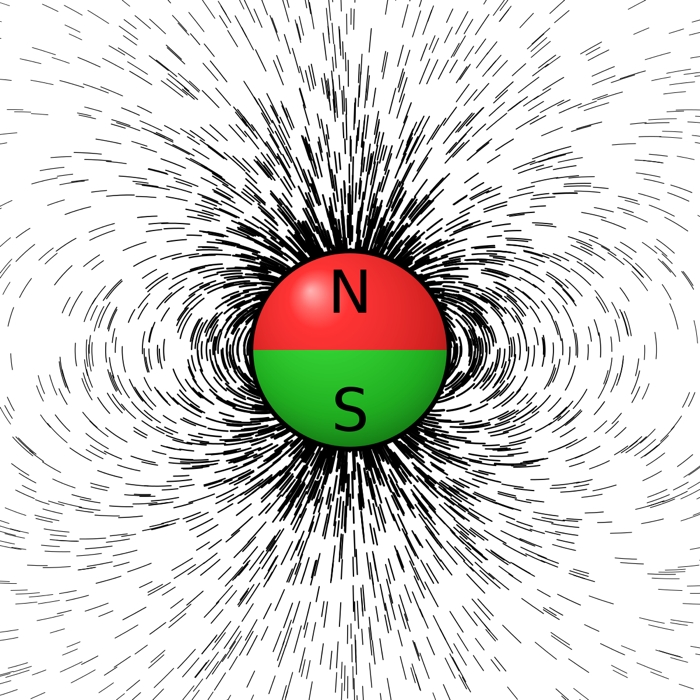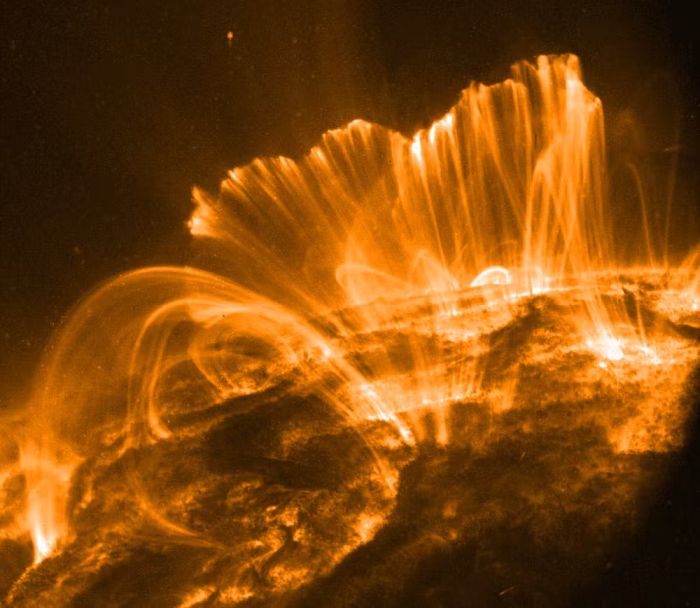A well-studied solar phenomenon may not be quite as simple as we we thought it was.
New simulations suggest that what we thought were loops of plasma known as coronal loops erupting out from the surface of the Sun along magnetic field lines may, at least sometimes, be wrinkles in corrugated sheets of plasma.
Astronomers have dubbed this phenomenon the “coronal veil”, and suggest that further research is needed to try to understand how and why they occur.
The finding is, they say, significant. Since coronal loops were first identified clearly in the 1960s, solar scientists have been using them to understand the properties of the Sun, including its magnetic field, and the density and temperature of the solar atmosphere.
“I have spent my entire career studying coronal loops,” says astrophysicist Anna Malanushenko of the National Center for Atmospheric Research.
“I never expected this. When I saw the results, my mind exploded.”
Coronal loops are fascinating and beautiful: long, closed arcs of glowing plasma, sometimes associated with sunspots. But, although scientists have been analyzing them to better understand the Sun for decades, a few of their properties don’t match what we might expect.
Firstly, coronal loops associated with sunspots tend to be much taller than calculations suggest they should be.
Secondly, the loops don’t become less bright with height. Think of iron filings sprinkled near a bar magnet, self-arranging in loops. The bigger loops that reach farther from the magnet are thinner and more tenuous.
 Iron filings along the magnetic field of a sphere magnet. (Geek3/Wikimedia Commons/CC BY-SA 4.0)
Iron filings along the magnetic field of a sphere magnet. (Geek3/Wikimedia Commons/CC BY-SA 4.0)
Coronal loops look like these iron loops, but if coronal loops were associated with magnetic fields, they should display similar visual expansion – higher loops are as bright as lower ones.
Malanushenko and her team conducted models of the solar corona using a software program called MURaM, which generates realistic magnetohydrodynamic simulations of the Sun. Recently, this was updated to include the solar corona, which made it an excellent tool for trying to better understand coronal loops.
 Coronal loops imaged by the Transition Region And Coronal Explorer spacecraft. (NASA/LMSAL)
Coronal loops imaged by the Transition Region And Coronal Explorer spacecraft. (NASA/LMSAL)
When the team ran their simulations, however, they found that the loops were not always discrete structures at all, but folds in optically thin sheets of plasma. Because these wrinkles are thicker and more dense, we can see them clearly.
However, the simulation also revealed that coronal loops can exist on their own, too. This suggests that the solar corona is a much more complex environment than we knew.
“This study reminds us as scientists that we must always question our assumptions and that sometimes our intuition can work against us,” Malanushenko says.
In addition to the coronal veils, the team’s simulations also capture the entire life cycle of a solar flare, and produced three-dimensional datasets of the solar atmosphere that can be used to conduct synthetic observations of the plasma and magnetic field. This can be used to probe the loops and veils in more detail.
That’s because understanding these structures from real solar observations can be tricky. When you’re looking at a loop from the side, the shape of its loop can’t be seen; but, when viewing from the front, you can’t see how wide the loop is, if it’s more like a thread or ribbon of plasma.
While veils resolve the properties of coronal loops that didn’t quite fit, there are some questions that remain unanswered. For example, how and why these structures form, and what makes them wrinkle. It’s also unclear how many of them might be real coronal loops. Synthetic observations might provide some answers.
That’s going to require designing new observational methods and analytical techniques, but the results so far could have implications for other areas of plasma physics, especially if there are structures in the fluid that are difficult, if not impossible, to see.
“This study demonstrates that the way we currently interpret the observations of the Sun may not be adequate for us to truly understand the physics of our star,” Malanushenko says.
“This is an entirely new paradigm of understanding the Sun’s atmosphere.”
The research has been published in The Astrophysical Journal.
